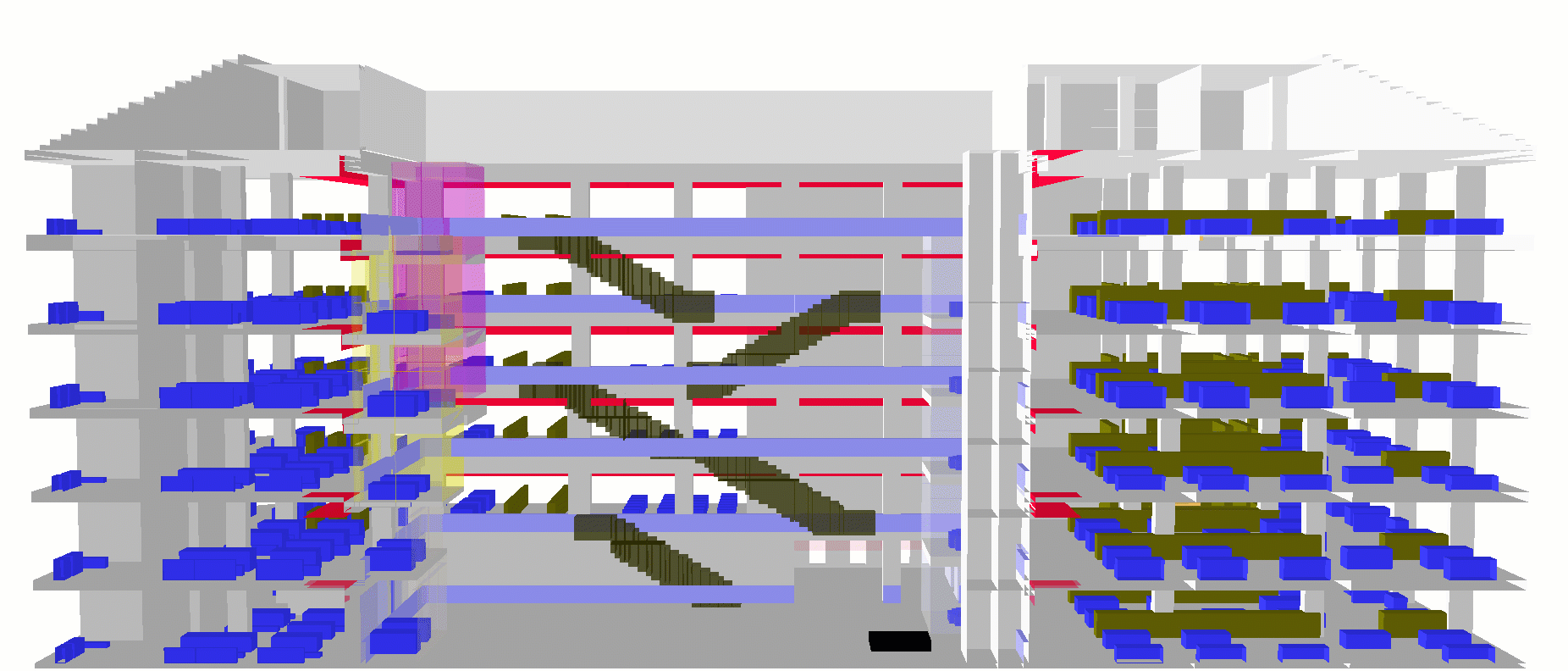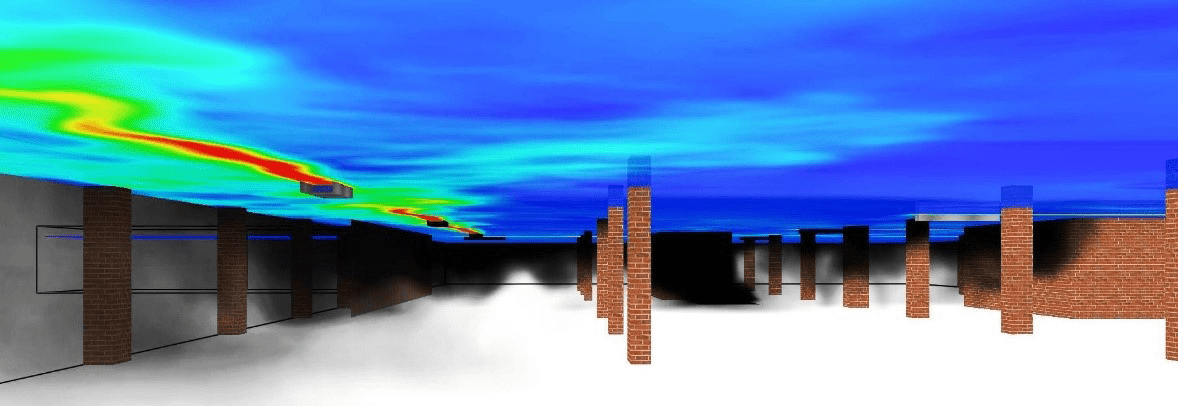Fire Physics and Smoke Control
Risk of fire and smoke in buildings is extremely dangerous. Especially in places with large volumes of atrium, concert halls, stadiums and tunnels, if the fire ventilation does not have the right ventilation principle, vital problems may occur. NFPA, SFPE, BS or DIN can be used to design the required standards and sufficient acceptances can be made. But if your design has a non-standard approach, it is most reasonable to simulate what can happen with numerical methods. Alkazar uses the accumulation of external flow wind calculations to produce solutions by conducting analyzes and due diligence especially in smoke control design.

As much as fire control is an important issue is the ability to direct smoke movements. Many designs already have procedures (fire extinguishing systems, response team, etc.) to prevent fire before it occurs. However, in an uncontrolled fire, it is important for extinguishing that excessive temperature or low visibility does not reach the critical level. When people are evacuated within the first few minutes, the smoke must be exhausted to reach the physical conditions for extinguishing the fire point.
Before all these situations happen, simulation methods at the design stage allow you to visually monitor the risk level.
- How the smoke is displaced by the movement of fresh air,
- How much temperature will increase depending on time in the mixture of fresh air and smoke,
- How will the air speed change on the escape route of people,
- How many meters of visibility decreased during escape etc.
Thus, CFD analysis to be used with the architect, mechanical design team and fire consultant will minimize the risks in the design phase.

The regulations and standards for fire and smoke management have been prepared in detail. However, the purpose of the buildings and architectural designs that are getting more and more complex in this case is not enough to show the extent of the risk.
For example,
- If you are going to do a smoke curtain work, from which floor should the curtain be applied, or on which floor should the curtain start?
- When you design a jetfan design for a closed car park, where should the fans be located?
- Is the fresh air supplied to the fire area dispersed with sufficient and necessary control?
- Does the sprinkler system provide adequate cooling?

While the number of examples above can be increased further, it can also be questioned whether the fire occurred in an open or closed space. For example, if the wind movements in an open car park feed the smoke and flames and carry them fast, this will increase the risk. The design of some buildings with the natural ventilation principle can increase the risk of smoke-induced poisoning due to wind. The upward tendency of the heated air along the height of the structure may cause the hot air (smoke) to advance to the upper floors to evacuate from the opening. Or, in a mechanically controlled design, the fans may not perform as expected due to wind pressure on the suction vents. In this case, it is critical to construct a system on the façade that will ensure that the fans will always be overcome with the average wind pressure. Testing all these situations with simulations in a digital environment will play an important role in relieving the burden of a designer.





